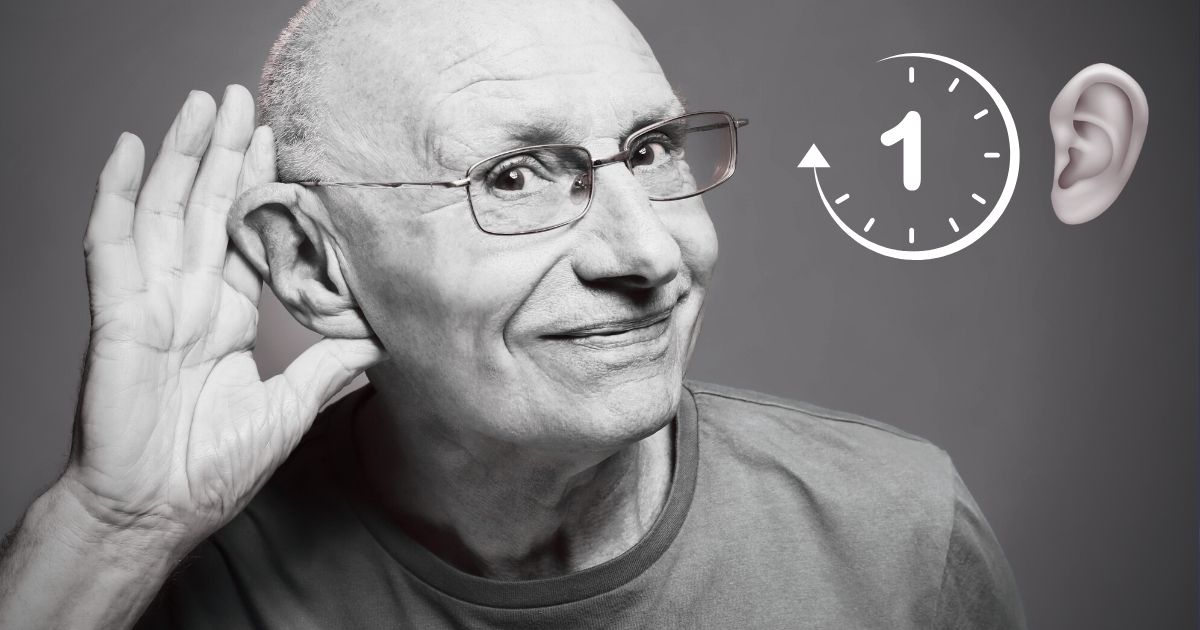There are now a number of “hearing tests” that can be performed in the quiet of one’s own home. These are predominantly threshold-based tests and are typically limited by the environmental condition of the test room or by the asymmetry of unmatched earphones or loudspeakers that are commonly used by the public.
One Minute Quick Test
The following is a quick one-minute test that can be performed anywhere and can be used to not only check the similarity among consumer level earphones (or equivalently, the output speakers of a personal computer), but also to check whether there are any cochlear dead regions in hard of hearing patients with a significant sensori-neural asymmetry.
This one-minute test can be performed at home or in the audiologist’s office and can provide valuable clinical information.
If performed at home, the hard of hearing patient will be able to bring these results to the audiologist and save a bit of clinical time. It can also be used to inform the person at home who may have just experienced a sudden unilateral hearing loss whether they should wait until Monday to have the presence of wax checked in their ear, or whether they should immediately seek out an otolaryngologist on any emergency basis with concerns that the sudden hearing loss may be sensori-neural in origin.
One of the hall-marks of a significant sensori-neural hearing loss (that is typically greater than a moderate level) is the possibility of cochlear dead regions. First delineated by Hallowell Davis and his colleagues over 70 years ago (Davis et al., 1950), and more recently by Brian Moore and his colleagues over 25 years ago (Moore, 1996; Moore et al., 2000), unilateral cochlear dead regions exhibit puretones that are heard as “flat” relative to that heard in the better/normal hearing ear.
This is the basis for a 30- second-long test of presence or absence of cochlear dead (Chasin, 2019) that can be used as a more efficient method that the Threshold Equalizing Noise (TEN) test (Moore et al., 2000). Cochlear dead regions would happen in significant sensori-neural hearing loss but would never happen for those with “mere” conductive pathologies such as wax occlusion.
Here is how the test works:
This audio file contains a series of puretones ranging from below the range of computer laptops and Smartphones (e.g., 63 Hz), in octave steps up to 8000 Hz with the first puretone being in the left channel and the second being in the right channel. For a perfectly functioning set of laptop speakers, the two puretones should sound identical in pitch and in sound level. The same can be said about a perfectly functioning set of earphones. If however, one side sounds louder than the other, but still in pitch, then this is evidence of a unilateral conductive asymmetry that may be related to wax occlusion. (It can also be evidence of a problem with your laptop speakers or the earphones that are being used). But if one side sounds quieter AND flatter than the other side, then this is evidence of a possible unilateral sensori-neural hearing loss in the ear the puretone is heard as flatter. In this later case, an immediate emergency otologic consultation would be required for possible steroid treatments.
For those people with a known hearing loss, perhaps with some sensori-neural asymmetry, performing this test at home prior to an assessment with their audiologist would provide important diagnostic and hearing aid programming information.
For speech, the hearing aid programming would use some form of a frequency lowering algorithm to avoid the cochlear dead region, and for music, a high frequency decrease of the amplitude of the music would be in order (see for example, Chasin, 2016; 2020).
Acknowledgement and information: The audio file is courtesy of Shaun Chasin (www.Chasin.ca). This audio file is available free of charge (in both .mp3 and .wav formats) and will be available on my website at www.MusiciansClinics.com in the “Demos” section, after January 2024.
References:
- Chasin, M. (2016). Back to basics: Frequency compression is for speech, not music. Hearing Review, 23(6), 12.
- Chasin M. (2019). Testing for cochlear dead regions using a piano. Hearing Review, 26(9), 12.
- Chasin, M. (2020). The problem with frequency transposition and music, Part 1. Hearing Review. 27(12).
- Davis, H., Morgan, C. T., Hawkins, J. E., Galambos, R., & Smith, F. W. (1950). Temporary deafness following exposure to loud tones and noise. Acta Otolaryngologica, 88(Suppl.), 1–57.
- Moore, B. C. J. (1996). Perceptual consequences of cochlear hearing loss and their implications for the design of hearing aids. Ear and Hearing, 17(2), 133–161.
- Moore, B. C. J., Huss, M., Vickers, D. A., Glasberg, B. R., & Alcantara, J. I. (2000). A test for the diagnosis of dead regions in the cochlea. British Journal of Audiology, 34(4), 205–224.







